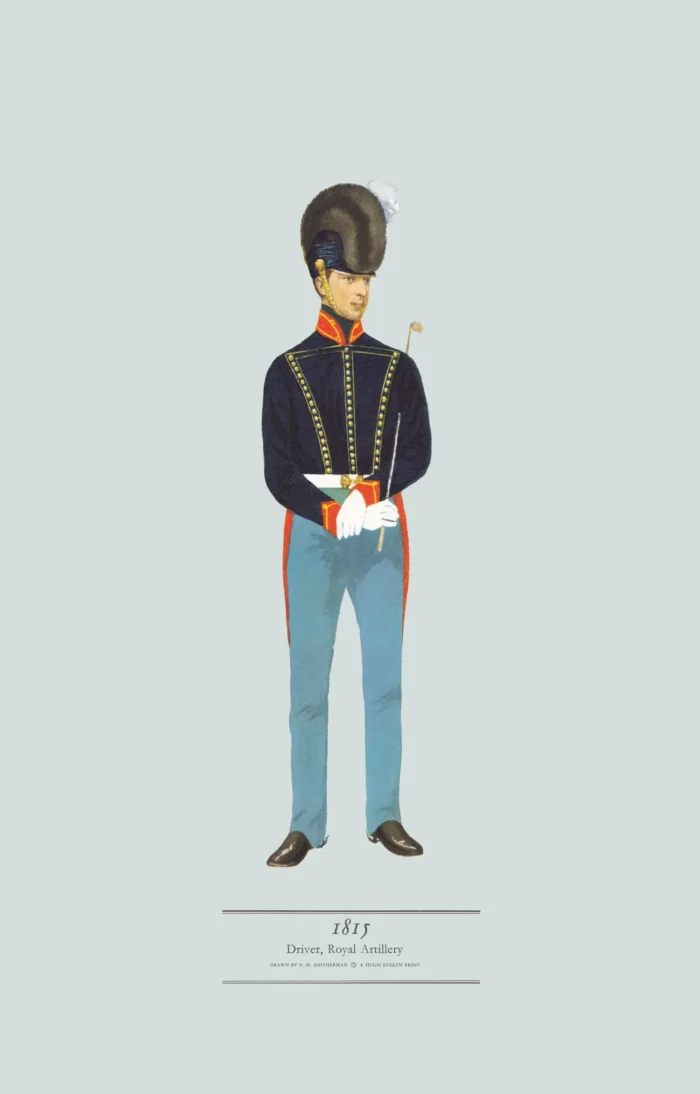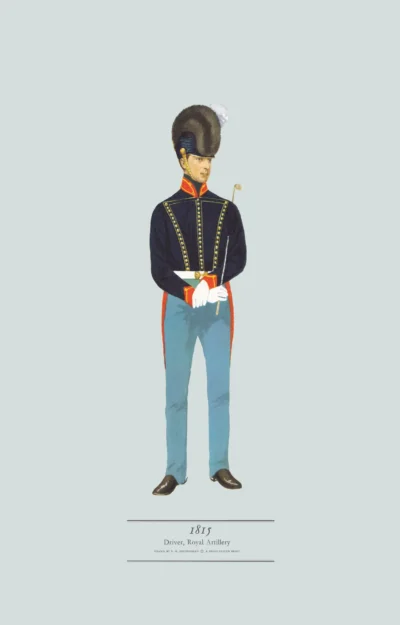1815 Driver, Royal Artillery
£12.50
1815 Driver, Royal Artillery (scroll down for a more detailed Description)
Published 1966 by © Hugh Evelyn Limited; drawn by Colonel Philip Henry Smitherman (1910-1982), Royal Corps of Signals
Size: c. 24.5 x 37.5cm [9 ½ ″ x 14 ½ ″] (may vary slightly from printers’ cut 50 years ago)
Printed on on medium cardstock weighing 144 g/sm2 faced in light greyish blue (RGB c. d5dede)
Print is STANDARD size – shipping is the same for 1 to 10 prints (based on largest print size in your order) – see Shipping & Returns
In stock
Description
The Corps of Drivers had a short history and won no battle honours, yet they must have been men of sterling worth, because the feats of the Royal Artillery during the Napoleonic wars would have been impossible without them. Sir John Moore’s report just before Corunna, ‘The artillery consists of particularly well-behaved men’, must have applied to the drivers too. This was the last uniform worn by the Corps of Drivers before its disbandment in 1822. It is a smart uniform, based on that of the Royal Horse Artillery, particularly its Light Dragoon helmet. There was always some competition between the Royal Horse Artillery and the drivers – colloquially known as the ‘Wee Gees’. General Mercer recalls the efforts made in about 1800 to have the turban on the R.H.A. helmet changed from blue silk to black velvet, because the ‘W. G’s’ wore blue silk and the Light Dragoons black velvet. He tells another story of how his troop captain secretly fitted out his troop with a special and ornate fatigue hat, only to find to his annoyance that the secret had leaked out to the commanding officer of the ‘Wee Gees’ who all appeared in similar hats on the same day. This story, incidentally, well illustrates the attitude then of officers to regulations, and the difficulty which we often have now in finding out what was worn in the past. Sources: Prints and drawings in possession of the R.A. Institution.
Additional information
| Weight | 0.0125 kg |
|---|---|
| Dimensions | 24 × 37 cm |





